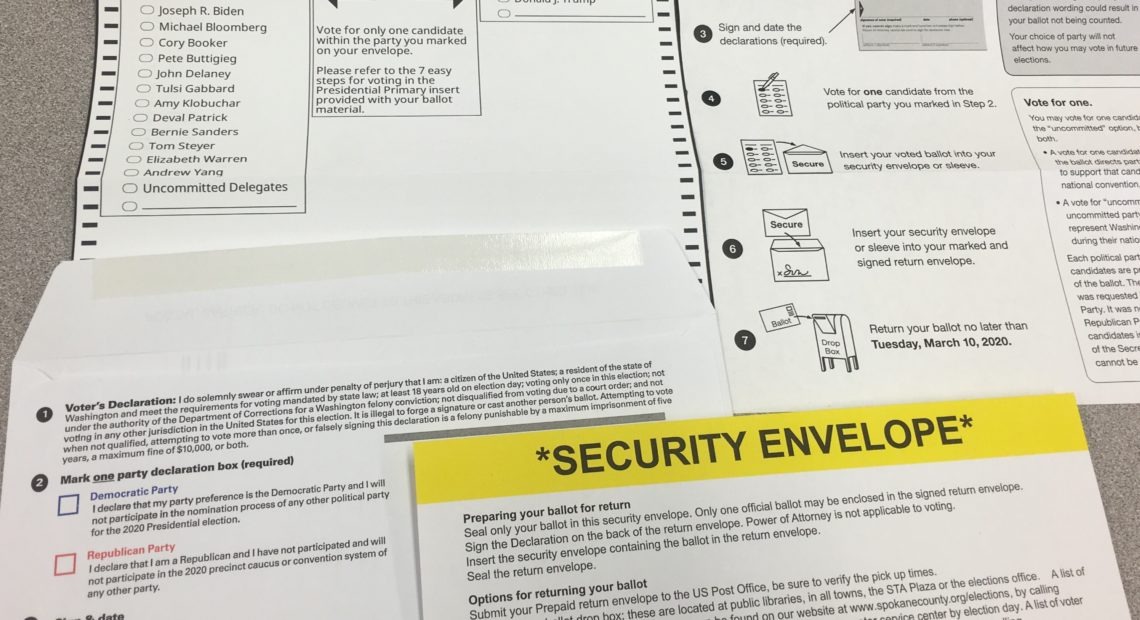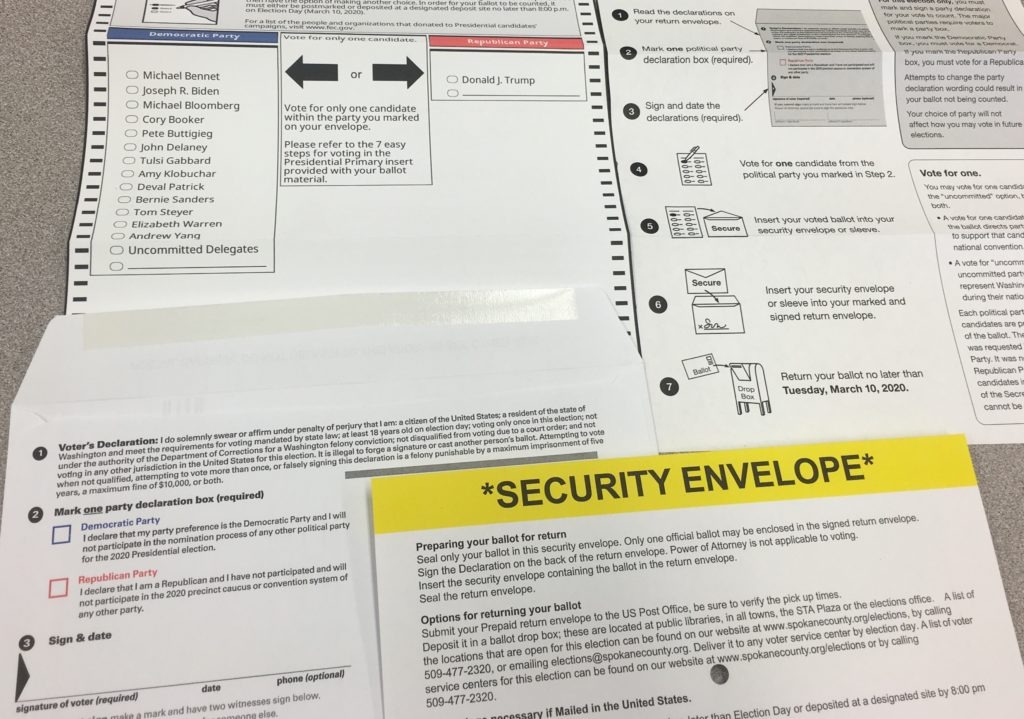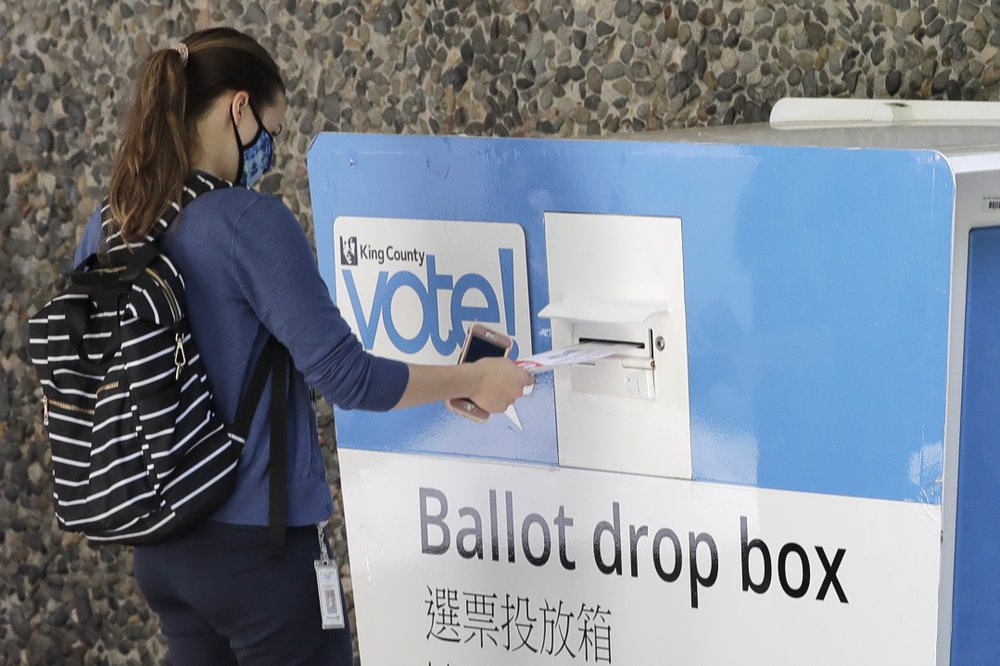
How To Register To Vote In Washington State: Everything You Need To Know For 2020
BY DONNA GORDON BLANKINSHIP / CROSSCUT
Whether you’re new to Washington state or just making sure you are fully prepared to vote in the Nov. 3 general election, here’s what you need to know about voting (plus lots of links for voters who live outside the state or have recently moved).
How to register
Washington voters can register up to the day of the election, but why wait? You can register online or through the mail by Oct. 26. Registration forms are available in many languages, from Amharic to Vietnamese. To register online, you’ll need a current Washington state driver’s license or permit, or a state identification card. If you do not have one of those cards, you can still register by mail or in person. The state will even help you find your county elections office, which is where you will likely need to go to register and vote in person between Oct. 26 and Election Day on Nov. 3.
If you don’t live in Washington, the U.S. government has a helpful site full of information to help you register in other states. According to the National Conference of State Legislatures, 40 states allow online voter registration and Oklahoma is in the process of setting up that system.

The 2020 Washington presidential primary ballot requited voters to select a party, which was new, and many people don’t care for it. CREDIT: Scott Leadingham/NWPB
How to get your ballot
If you are registered to vote in Washington state and your address hasn’t changed, your ballot will be mailed to you about two weeks before the election, around Oct. 16. To make sure your registration is up to date with your current address, check in here. If you did not receive a ballot, lost it or just made a mistake while filling it out, you can print a new one at your county elections office website. If you need a voter’s pamphlet, you can look at the guide at the same place where you check the status of your ballot.
In Washington, you do not need to request an absentee ballot, but other states have a variety of rules. This site will help you figure out how to sign up for an absentee ballot if you do not live in the state.
How to move your registration
According to the federal government, if you move permanently to another state, you just need to register to vote in your new state. If your parents or your ex gets a ballot addressed to you at your previous residence, they should just toss it in the recycling. If someone other than you fills out that ballot and submits it in Washington state, the incorrect signature should give them away and the ballot will likely be rejected. Moving away? You can cancel your voter registration in Washington by filling out this form.
How and when to turn in your ballot
Every county has drop boxes where you can turn in your ballot. The Secretary of State’s Office keeps this list of where the boxes are located. You can drop your ballot in one of these boxes until 8 p.m. Election Day. Your ballot can also be mailed, without a stamp, and will be considered valid if it’s postmarked by Election Day. If you live in one county but work or are temporarily staying in another, you may be wondering what to do with your ballot if you can’t get back to a drop box in your home county. Counties do their best to forward misplaced ballots to the correct county, but to ensure your ballot is counted, it’s probably a better idea to put your ballot in the mail than to drop it in the drop box of the wrong county. Find information below on how to track your ballot.
Can you vote on Election Day in person?
Yes, you can vote and drop off your ballot in person. And in Washington, you can even register to vote on the day of the election and then fill out a ballot at the same time. Even though Washington is considered a vote-by-mail state, in-person voting has always been available for people with disabilities who need to use a machine to help them vote. Voting centers will be open across the state for people who want to drop off their ballot, but as elections officials in King County are quick to add, for safety reasons and to avoid becoming overwhelmed, they really would prefer you fill out your ballot and put it in a drop box instead. In King County, voting centers will offer a drive-up service for people dropping off ballots. They are still finalizing the locations, but it appears they will include the CenturyLink Field Event Center. Check with your own county closer to the Nov. 3 election to find out where you can drop off your ballot or vote with a machine.

A person drops off a ballot for Washington state’s primary election, Tuesday, Aug. 4, 2020, at a collection box at the King County Administration Building in Seattle. CREDIT: Ted S. Warren/AP
Why it takes so long to count the votes
While counting votes has always included counting the ballots that are cast on Election Day, Washington’s old system, in which you filled out your ballot and then slid it into the vote-counting machine yourself, was more automated. Those machines transmitted the results to a central computer and allowed for much faster vote counting. Our vote-by-mail system is more complicated. Your ballot travels by mail or by truck from a drop box to the vote-counting center in the county you submitted it. If you vote on Election Day, your ballot will be among many getting signature checked by hand by a human and then it is fed into the counting machine. Washington allows voting up to 8 p.m. Election Day. While earlier ballots can be processed as they come in, the flood of ballots that usually arrive on Election Day slows down the system. People in Washington are used to closer races taking days or even weeks to decide. Since many states will employ some version of vote-by-mail this fall, the rest of the country may need to learn more patience this November.
What is done to keep your ballot safe
Washington, which has been conducting all its elections by mail for a decade, has a system for keeping ballots safe and secure. The more than 450 ballot drop boxes statewide and ballot collection transportation are both secured through a variety of tracking systems. Once ballots arrive in vote-counting centers, the security measures continue. Vote-by-mail is not a simple process.
How to make sure your vote is counted
In Washington, you can track your ballot on the same site where you can check your registration and look at the voter’s pamphlet. This site will tell you when your ballot was mailed to you, when you returned it and whether it was accepted, which means your vote was counted. When you sign your ballot envelope, make sure you provide a phone number or email address because election officials in your county will actually contact you if they have a question after comparing your signature with past ones they have on file. This signature check is the key to election security and election officials take this seriously. Many people who have been voting in Washington for a long time will likely have their signature questioned at some point, probably because, like me, they have made a change at some point. Once you confirm that your ballot belongs to you, your ballot will be counted. This is also how they can catch people trying to turn in someone else’s ballot.
How to look at results like a journalist
For statewide offices and legislative races that cross county lines, the best place to look for election results is on the secretary of state’s election results page. Until the votes are counted, this site is also a good place to see the online voter guide. A hint: The voter turnout tab will tell you how many votes have been counted so far and how many are left to be counted. This might give you a clue about whether these results are likely to hold as more votes are counted or aren’t enough to show a clear picture yet. This is also the page that will tell you the next time the vote count will be updated. If you want to up your prognosticating game: On the results pages, click on the county results map and see how different candidates are doing across the state and then compare that information with the page showing how many votes are still to be counted.
What if you have more technical questions
Send us a question through the form below and we’ll do the research for you or send you a link or a phone number to connect you to the right person.
Crosscut is working to get you the information you need to cast your ballot this November. If you have questions about Washington state candidates and issues, submit them here. If you’re wondering about the process of voting, you can direct those questions here.
Visit crosscut.com/donate to support nonprofit, freely distributed, local journalism.















